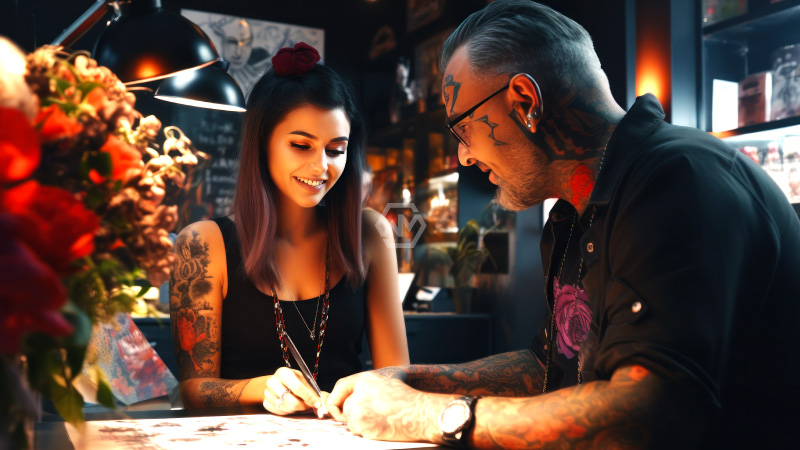- It’s crucial to educate yourself on the process before making such a big decision as getting a tattoo.
- To select the ideal tattoo parlor and artist, look through their social media portfolios.
- Infection prevention measures include applying a layer of ointment and securing the bandage with tape.
To guarantee a comfortable experience, it’s crucial to educate yourself on the process before making such a big decision as getting a tattoo. Dermatologists Marie Leger and Rebecca Marcus provide excellent advice on getting inked.
To select the ideal tattoo parlor and artist, look through their social media portfoliosand make an appointment so you can gauge their vibe. Select the design and style of your tattoo, as well as whether you would prefer to work with an artist who shares your aesthetic or to have the tattoo in a less painful area.
First Tattoo
Make an appointment and make sure you have healthy skin before getting inked. To facilitate tattoo application and activate your skin’s natural healing processes, exfoliate, shave, and make sure your skin is well-hydrated. To avoid infection, wash your hands both before and after getting inked.
Pay the artist, finish the paperwork, and give them a tip. Show up early and bring proper identification, your address, and your phone number. Before services are provided, payment must be made, and a 20% tip is customary. Depending on where you want your tattoo to be, settle into a private room or an open work area in the tattoo chair.
Use rubbing alcohol to clean the tattoo area and a disposable razor to shave it in preparation for the inking. Use a thermal imager machine to approve the stencil transfer location, saving hours of tracing time. To make the design transfer darker, wet the skin with soap or water or apply stick deodorant. You are now prepared to proceed after removing the paper.
When getting a tattoo, the artist sets up their equipment by putting needles and tubes in sterile pouches, and inks in ink caps. To clean and change the needles’ color, pure distilled water is added. To make the transfer design stay smoother and longer, an ointment is applied to it. It gets easier after a few minutes, though the first line is the roughest.
To shade and color after finishing the linework, the artist may use different tools or needles. After cleaning and treating the tattoo like a wound, a photo of it is taken for the artist’s portfolio. Infection prevention measures include applying a layer of ointment and securing the bandage with tape.
The tattoo artist will provide aftercare instructions; it is the patient’s responsibility to make sure the tattoo is properly cared for. Dr. Marcus advises applying a bandage and protective ointment to the tattoo, while Dr. Leger suggests washing the area with mild soap. During the healing process, moisturize twice or three times a day to keep the skin from drying out and cracking.



